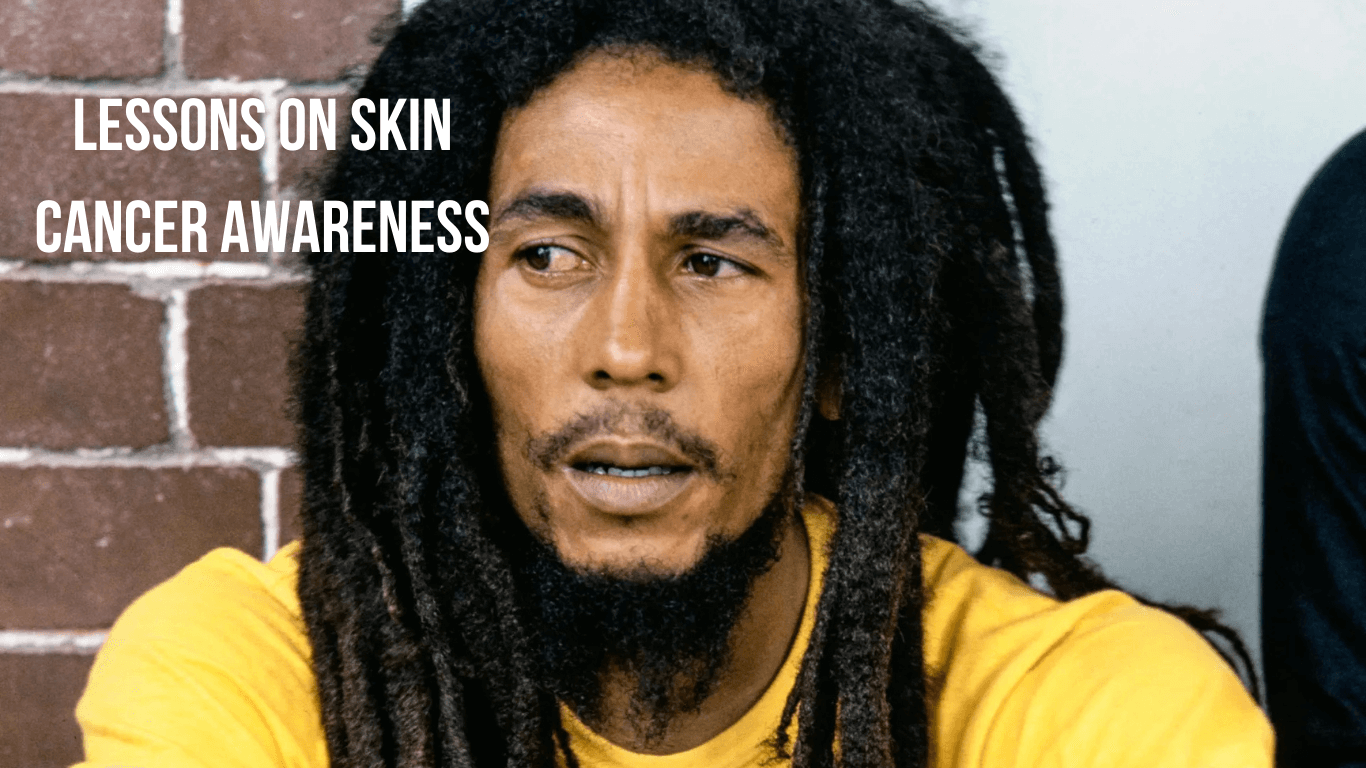Bob Marley, the legendary Jamaican singer and songwriter, is remembered as a supremely talented musician and one of the pioneers of Reggae music. Born in 1945, Marley rose to fame with his powerful messages of unity and love through his music.
However, his tragically short life came to an untimely end when he died at the age of 36 in 1981. His story is not just one of music, but of resilience in the face of a devastating disease.
Bob Marley’s death was caused by melanoma, a rare and aggressive subtype of skin cancer called acral lentiginous melanoma, which typically affects people with darker complexions. It started in his big toenail in 1977, and by the time of his death, the disease had spread, impacting his overall health.
Despite his struggle, Marley’s fight for prevention and detection of the disease teaches us about the importance of early treatment. His passing has inspired people around the world, making his story more than just fiction, but a real lesson on the importance of health and treatment.
How Did Bob Marley Die?
Bob Marley, the iconic Jamaican singer, songwriter, and musician, left a lasting legacy that transcends generations. Born on February 6, 1945, he became a global symbol of love, unity, and peace through his revolutionary reggae music and Rastafari faith.
Despite his immense impact, Marley’s life was tragically cut short in 1981 when he was just 36 years old. His passing was linked to a rare form of skin cancer called acral lentiginous melanoma (ALM), a condition that carries important lessons about prevention, awareness, and early detection.
A Rare and Fatal Diagnosis
In 1977, Bob Marley injured his big toe during a soccer game. The injury appeared minor, but a lesion under his toenail raised concerns. Initial assessments suggested it was a soccer injury, but a biopsy later revealed it to be subungual melanoma, a rare type of ALM.
Unlike more common skin cancers like basal cell carcinoma and squamous cell carcinoma, ALM often develops on areas with hairless skin, like the nail bed, feet, and hands, especially in individuals with pigmentation such as African Americans, Asian Indians, and Hispanics.
Marley’s diagnosis was significant as ALM is not directly caused by UV exposure from sunlight or tanning beds, making it harder to identify early. His case underscores the importance of routine skin checks, especially for non-white individuals who might dismiss warning signs due to skin type.
The Progression of the Disease

Despite recommendations to amputate his toe for better outcomes, Marley opted for a less invasive approach in line with his spiritual beliefs. The cancer, unfortunately, metastasized to his brain, liver, and lungs, becoming malignant and ultimately fatal. By the time he sought treatment, the disease was in its late stages, making recovery unlikely.
Bob Marley’s Treatment Journey
Marley explored both conventional and alternative treatments. He received care from renowned cancer surgeon Michael Steppie, associated with Associates in Dermatology in Orlando, and tried chemotherapy. Additionally, he turned to holistic methods under Josef Issels, a German doctor known for controversial, diet-based, and Ozone injections therapies. Despite these efforts, the cancer’s progression was relentless.
Public Reaction and Cultural Impact
News of Marley’s condition shocked fans globally. His final performance at Madison Square Garden in New York City in 1980 was a testament to his unwavering spirit. Marley passed away at Cedars of Lebanon Hospital in Miami, leaving the world grieving his immense loss.
Prime Minister Edward Seaga honored him with a state funeral in Jamaica, attended by thousands. Marley’s mausoleum in Nine Mile, St. Ann Parish, became a pilgrimage site, and his burial included his Gibson Les Paul guitar, a Bible opened to Psalm 23, and cannabis as symbols of his faith and art.
The Legacy Lives On
Even after his death, Bob Marley remains an influential figure. His lyrics, such as those from “One Love” and “Exodus,” inspire spiritual and cultural connections across the globe. For more insights into his personal and professional life, check out his Bob Marley biography.
Marley’s music, infused with messages of humanity and authenticity, earned him a Lifetime Achievement Award, induction into the Rock and Roll Hall of Fame, and a star on the Hollywood Walk of Fame. His contributions continue to resonate, influencing generations and fostering social awareness.
Lessons on Skin Cancer Awareness

Marley’s battle with skin cancer highlights the importance of education and proactive prevention. Regular dermatology visits, self-checks, and recognizing warning signs like new, changing, or irregular lesions can save lives. Additionally, individuals should prioritize sun protection through self-care, especially for areas of unexposed skin, and stay informed about their skin type risks. Early diagnosis and timely treatment significantly improve the survival rate.
Conclusion
Bob Marley’s life and legacy teach us invaluable lessons about awareness, prevention, and the enduring power of humanity. His tragic battle with acral lentiginous melanoma reminds us of the importance of routine skin checks, early diagnosis, and proactive treatment for conditions like melanoma and other skin cancers. By understanding the risks, especially for individuals with pigmentation such as African Americans, Asian Indians, and Hispanics, we can work towards better education and prevention.
As we reflect on Marley’s music and message of love, unity, and peace, let his story inspire us to prioritize our health through self-care, sun protection, and recognizing warning signs. His fight against this fatal, rare, and deadly disease serves as a powerful reminder of the importance of early detection and the role of both traditional and holistic treatments in the journey to healing.
Bob Marley’s influence, from his reggae music and Rastafari faith to his global cultural impact, remains a beacon of authenticity, spiritual connection, and artistic brilliance. His story continues to inspire generations, urging us to balance health, faith, and the pursuit of a meaningful life.
FAQs About How Did Bob Marley Die
What Caused Bob Marley’s Death?
In 1977, Bob Marley noticed a spot on his toe after a soccer injury. When the lesion didn’t heal, he consulted a doctor who biopsied it. The big toenail issue turned out to be melanoma, a deadly skin cancer. Despite it being discovered early, delayed treatment allowed the disease to spread, leading to his death in 1981 at age 36.
How Did Bob Marley Get Cancer?
Marley’s case began with a dark lesion under the nail of one of his big toes. Doctors originally thought it was a sports injury, but it was later found cancerous. This rare type of skin cancer, known as acral lentiginous melanoma, formed and eventually spread throughout the singer’s body, causing his death at the age of 36.
How did Bob Marley get shot?
At 8:30pm on December 3, 1976, seven men armed with guns raided Bob Marley’s house at 56 Hope Road in Jamaica. The gunmen broke into the property while Marley and his band were on a break from rehearsal for the upcoming Smile Jamaica Concert. During the attack, Marley’s wife, Rita, was shot in the head while in the car in the driveway. Marley himself was also hit, taking shots to his chest and arm. Despite the injuries, Marley survived and later performed at the concert, displaying his resilience.
Was Bob Marley’s Cancer Treatable?
Bob Marley was diagnosed with advanced melanoma in the 1970s, a time when effective treatment options were limited. His case was unique because the cancer appeared under his toenail, a rare and ironically aggressive form of melanoma. Doctors suggested surgery to remove the cancerous toe, which could have saved or possibly lengthened his life. However, Marley refused the procedure due to personal and religious beliefs, a choice that left him with few options as the cancer spread. This story reflects the lack of awareness and resources for patients during that era.
What Happened to Marley’s Jaw?
In Charles Dickens’ A Christmas Carol, the ghostly figure of Marley is vividly depicted with haunting illustrations by John Leech, a renowned British caricaturist. One striking detail is the cloth tied around Marley’s head. This detail isn’t just for effect—it serves a practical purpose in the story. When Marley appears to Scrooge and unwraps the binding, his lower jaw falls, emphasizing his spectral state and the unnatural decay of his ghostly form. This chilling moment is one of the most memorable elements, combining Dickens’ storytelling with Leech’s visual mastery to deeply unsettle readers.



